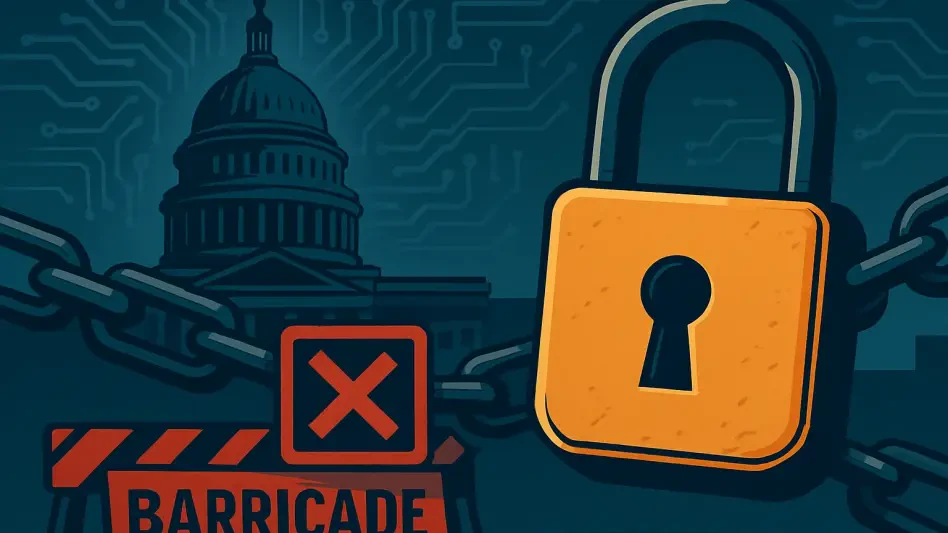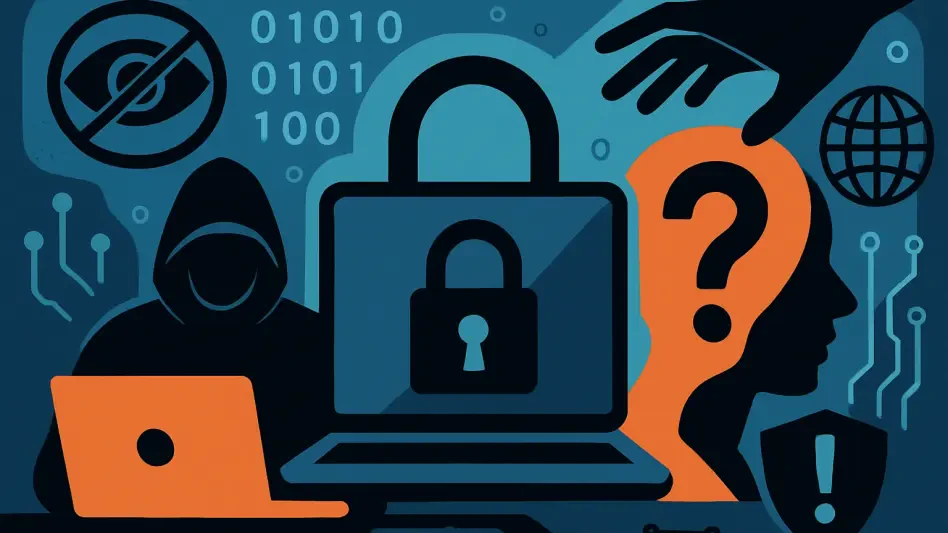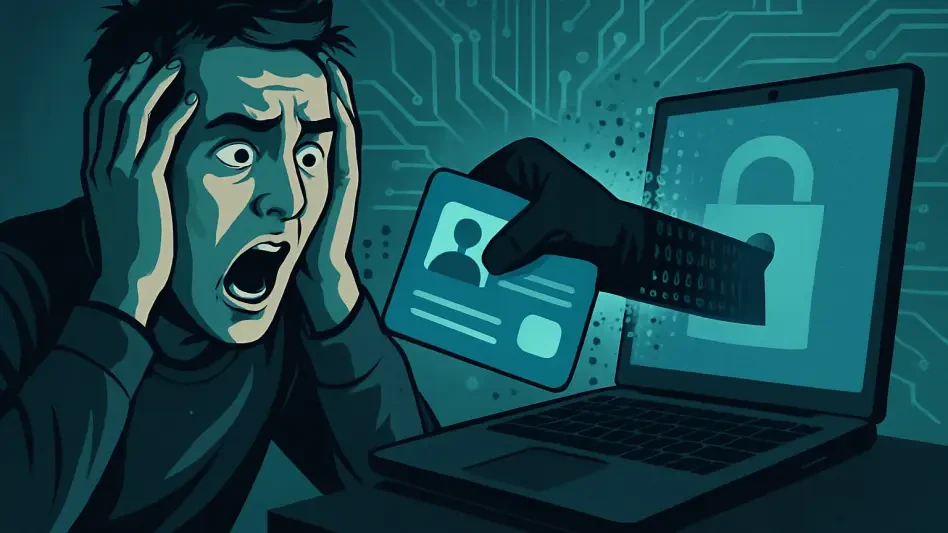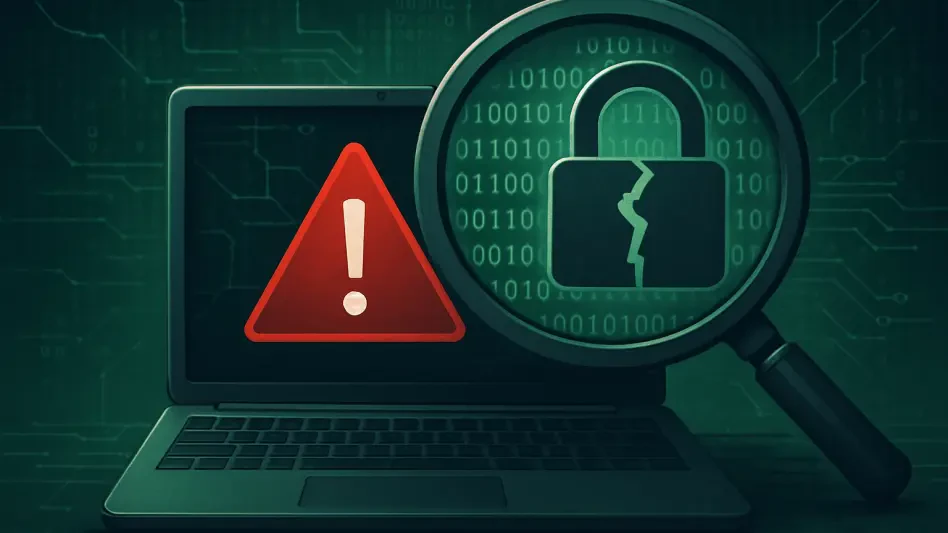The dark web has long been a haven for illicit activities, but recent discoveries have unveiled a new level of sophistication in identity theft operations. Researchers at iProov’s biometric threat intelligence unit have identified a dark web operation that farms facial ID images and genuine identity documents, posing a significant threat to traditional identity verification systems. This article delves into the intricacies of these operations, their methodologies, and the implications for both consumers and financial institutions.
The Sophistication of Dark Web Identity Theft
Beyond Traditional Identity Theft
The dark web operation uncovered by iProov researchers is notable for its advanced approach to identity theft. Unlike conventional methods that rely on data breaches and cyber intrusions, this operation actively pays users for their identity details. This shift marks a departure from merely scraping compromised biometric data from stolen databases. Instead, the fraudulent operators ensure that the personal information they acquire comes from genuine and unaltered sources, making their schemes more convincing and harder to detect.
This operation signals a profound evolution within the landscape of identity theft. The act of compensating individuals for their biometric and personal information introduces a participatory element that was previously absent from traditional identity theft tactics. Offenders don’t just harvest data from anonymous breaches; they cultivate a market where users willingly trade their identities. This sophisticated strategy reflects a greater emphasis on obtaining bona fide information that may successfully bypass conventional security measures designed to detect fraud using altered or fake documents.
The Role of Genuine Documents
One of the key elements of this sophisticated operation is the use of genuine identity documents paired with corresponding facial images. This tactic makes traditional verification methods unreliable, as the documents used are authentic and unaltered. The operation’s ability to leverage genuine documents highlights the need for more advanced verification systems. By relying on unaltered documents, the fraudsters avoid the pitfalls associated with counterfeit documentation, which is often easier to detect through careful scrutiny.
The utilization of legitimate documents points to a dangerous loophole in identity verification protocols. Even the most advanced detection systems may fail to flag these documents as fraudulent because they are real and originally issued by authorized entities. The inherent authenticity of these documents means they can seamlessly blend into legitimate transactions, enhancing the believability of the criminals’ activities and making detection considerably more arduous for institutions trying to protect their users’ identities.
Financial Incentives for Participants
A concerning aspect of this operation is the willingness of individuals to sell their identities for short-term financial gains. This participation not only compromises their security but also contributes significantly to sophisticated impersonation fraud. The operation’s success relies heavily on the availability of genuine documents and matching biometric data, which are challenging to detect through standard methods. Individuals participating in this marketplace may not fully comprehend the long-term consequences of their actions, as the immediate financial benefits eclipse the potential risks.
These financial incentives create an environment where short-sighted decision-making prevails, allowing the black market for biometric data to thrive. As more people opt to sell their identities, the cycle of identity theft perpetuates, feeding into more sophisticated and widespread fraud. The financial gains offered by these operations make it tempting for individuals to overlook the severe implications, which may include not only personal financial loss but also long-lasting damage to one’s credit history and reputational standing.
Methodology of the Attack
Document Verification Challenges
The attack process involves multiple stages, starting with document verification. Traditional verification systems may falter when faced with genuine documents, as these are not easily flagged as fraudulent. This initial step is crucial in bypassing basic security measures. The authenticity of the documents allows the malicious actors to slip through initial screening processes without raising red flags, effectively opening doors that would normally be shut to counterfeit or altered documents.
This stage in the methodology capitalizes on the inherent trust placed in official documents. Security measures primarily designed to catch forged documents fail when the items in question are genuine. Entering this data into systems designed for fraud detection assigns them high credibility, making subsequent verification steps appear valid. This method significantly undermines the reliability of traditional document verification processes, highlighting the urgent need for innovations that can discern legitimate documents’ misuse.
Facial Matching Techniques
Pairing legitimate facial images with corresponding documents poses significant challenges to basic verification systems. The operation employs advanced techniques such as 3D modeling, face-swapping, and real-time animation to create convincing matches. These methods can easily bypass detection systems that rely solely on facial recognition. By manipulating facial data with sophisticated technology, fraudsters can produce realistic images that match genuine documents, further complicating the detection efforts by security systems.
These sophisticated facial matching techniques demonstrate a keen understanding of loopholes within existing verification frameworks. By exploiting these vulnerabilities, criminals can infiltrate systems that previously relied on facial recognition as a robust security measure. High-resolution imaging and animation techniques ensure the fraudulent identities look convincing enough to pass muster under normal scrutiny. The overt reliance on tech-savvy solutions stresses the need for simultaneously enhancing security technologies to anticipate and counter these sophisticated deception strategies.
Defeating Liveness Detection
Liveness detection, a critical component of biometric verification, is also targeted by these sophisticated operations. Techniques such as 3D modeling and real-time animation can bypass liveness detection systems, making it difficult to distinguish between genuine and fraudulent attempts. This highlights the need for more robust and multi-layered verification systems. Liveness detection is imperative in discerning whether the facial recognition attempt is being made by a real person present at the moment or a pre-recorded or manipulated image.
By overcoming liveness detection, threat actors can make dead images or animations appear as if they are live, active participants in the verification process. This capability strikes at the heart of one of the last lines of defense in biometric verification. The exploitation of liveness detection vulnerabilities demonstrates the relentless ingenuity of identity thieves. Institutions must therefore develop advanced, multi-layered verification methods that account for and respond to these advanced tricks, ensuring continued security in the face of evolving threats.
Mitigation Strategies
Multi-Layered Verification Systems
To combat these sophisticated identity fraud methods, iProov researchers recommend multi-layered verification systems. These systems should verify the identity against official documents, use embedded imagery and metadata analysis, present verification challenges in real-time, and employ a combination of technologies and threat intelligence. A multi-layered approach ensures that if one security measure is circumvented, others will provide additional barriers to credibility and access.
Multiple verification layers intersect and overlap, creating a more formidable defense against identity theft. Systems that independently verify documents, biometric data, and user presence narrow potential entry points for criminals. By analyzing metadata and using real-time verification challenges, security measures can quickly discern anomalies or fraudulent behaviors. This comprehensive strategy underlines the importance of integrating various technological defenses into a harmonized, robust security infrastructure capable of mitigating these sophisticated attacks.
Real-Time Verification Challenges
Presenting verification challenges in real-time can help thwart attempts to use pre-recorded or manipulated biometric data. This approach ensures that the individual being verified is physically present and actively participating in the verification process. Real-time challenges can include requiring specific head movements, blinking, or other actions that are difficult to replicate using static images or pre-recorded videos.
This method forces fraudulent attempts to reveal themselves by failing to comply with the dynamism of real-time interaction. Dynamic verification measures serve as an important tool in modernizing security protocols, pushing the boundaries of traditional identification standards. By integrating immediate, on-the-spot checks, organizations enhance their ability to detect and respond to fraudulent attempts swiftly. Ensuring user presence this way diminishes the chances of unauthorized access through illicit biometric data, reinforcing the reliability of the verification process.
Leveraging AI and Threat Intelligence
AI-based verification systems are crucial in developing reliable defenses against these advanced threats. By leveraging AI and threat intelligence, organizations can enhance their security measures and address vulnerabilities that AI-generated deepfakes and face-swapping technologies may introduce. Utilizing AI in verification processes enables real-time analysis and detection of fraudulent patterns that human analysts might overlook.
AI’s ability to rapidly process and evaluate massive datasets equips it to recognize nuanced and subtle anomalies within identity verification attempts. Integrating threat intelligence with AI can result in predictive models that anticipate and identify emerging fraudulent tactics. This fusion of AI and threat intelligence fortifies security measures, transforming them into proactive defenses against increasingly sophisticated threats. As the landscape of identity theft continues to evolve, so too must the technologies deployed to safeguard against it.
Evolution of Identity Fraud
Moving Beyond Simple Document Forgery
The discovery of this dark web operation underscores an evolving trend in identity fraud. Criminals are moving beyond simple document forgery to utilizing genuine documents and biometric data. This evolution necessitates a shift in identity protection strategies to counter these advanced techniques. The reliance on authentic documents indicates a new phase in identity theft where the focus is on blending into legitimate networks seamlessly.
As criminals adapt, so too must the countermeasures employed. Identity protection strategies can no longer solely focus on detecting forgeries but must also anticipate the misuse of legitimate documents. This shift implies a comprehensive overhaul of verification methods to address the intricacies of modern-day fraud. Adapting to these evolving tactics is key to maintaining efficacy in identity protection and ensuring that future verification systems remain a step ahead of fraudulent activities.
Increasing Complexity of Detection
The increasing difficulty in detecting and preventing fraudulent activity is a significant concern. With criminals now having access to genuine, unaltered identity materials, organizations must develop sophisticated, multi-faceted detection methods that involve real-time verification and AI. This complexity amplifies the challenges faced by institutions as they seek to safeguard their users against identity theft.
Traditional, single-layer security measures are increasingly inadequate in the face of these evolving threats. Building robust, multi-faceted detection methods involves the integration of advanced technological solutions capable of identifying and mitigating attempts to misuse authentic documents. Organizations must leverage real-time data analysis, pattern recognition, and timely threat intelligence to anticipate and react to sophisticated identity theft attempts effectively. Only by adopting these measures can they ensure sustained security.
The Role of Financial Institutions
Financial institutions, which rely heavily on biometric verification, face significant threats from the use of genuine identity documents paired with matching facial IDs. The success of these sophisticated attacks poses a direct risk to banking security, necessitating the implementation of advanced threat detection systems. The reliability of biometric verification systems has become a critical junction in ensuring the security of financial transactions and protecting user data.
Given their dependence on identity verification for secure transactions, banks and financial firms must stay at the forefront of adopting new technologies that counteract these sophisticated identification threats. Sophisticated multi-layered verification systems, adaptive to new fraudulent techniques, are imperative. By enhancing their security infrastructure with advanced threat detection, financial institutions can significantly reduce the risk of identity theft and account fraud, ensuring their customers’ trust and security.
Consumer Risk and Awareness
Risks of Selling Biometric Information
Individuals selling their biometric and identity data are placing themselves at considerable risk. This participation contributes to a cycle of identity theft that can have long-term repercussions. Consumers must be educated on the dangers of exchanging their sensitive information for financial incentives. Biometric data, once compromised, cannot be easily changed like a password, posing a perpetual risk of identity misuse.
Awareness campaigns targeting consumers are essential to mitigate this risk. Educating the public about the severe consequences of selling their biometric information can help curb the supply within black markets. Consumers should understand that the immediate financial gain is overshadowed by the potential for long-term harm, which includes financial loss, identity breaches, and compromised personal security. Understanding the gravity of these threats can discourage participation in these risky transactions.
Long-Term Security Implications
The long-term security implications of selling biometric information are severe. Once compromised, biometric data cannot be easily changed, unlike passwords or PINs. This makes it crucial for consumers to understand the risks and avoid participating in such transactions. The irreversible nature of biometric data highlights the ongoing risks that come with compromised biometrics, underscoring the importance of protecting oneself against fraudulent use.
Consumers need to be proactive in safeguarding their biometric data, recognizing the intrinsic value and irreversibility that comes with it. Financially motivated exchanges of biometric information may seem enticing but the potential for permanent damage far outweighs any monetary benefits. Understanding these long-term implications can lead to better personal data management practices and heightened vigilance against becoming complicit in identity fraud schemes.
Industry Collaboration and Future Directions
Importance of Collaboration
Collaboration between threat intelligence units, security experts, AI developers, and financial institutions is crucial in combating these sophisticated threats. Sharing knowledge and advancements in technology can strengthen overall defenses against identity fraud. An integrated approach that combines expertise from various sectors ensures more robust and comprehensive solutions to emerging threats.
The strength in collaboration lies in the pooling of diverse knowledge and resources, allowing for the rapid development and implementation of advanced security measures. By working together, industries can share insights, identify common vulnerabilities, and develop comprehensive strategies that address the multifaceted nature of modern identity theft. This integrative approach is paramount in building a resilient defense against evolving threats and ensuring the security of personal and financial data.
Advancements in Verification Technologies
The discoveries by iProov underline the need for improved security technologies and methodologies in the fight against identity theft. Enhanced biometric verification methods and vigilant monitoring of emerging threats on the dark web are crucial. As these illicit activities grow more advanced, both consumers and institutions must remain informed and cautious to protect sensitive personal and financial information.
For consumers, the risk is that their personal information can be bought and sold without their knowledge, leading to financial losses, damaged credit scores, and other forms of identity fraud. Financial institutions face the challenge of adapting their security protocols to defend against these sophisticated threats.
Identity theft on the dark web is becoming more advanced, leveraging high-quality facial images and real identity documents to bypass conventional security measures. Enhancing biometric verification methods and maintaining vigilance against dark web threats are crucial steps. Both consumers and institutions must stay informed and cautious to protect sensitive personal and financial information.







